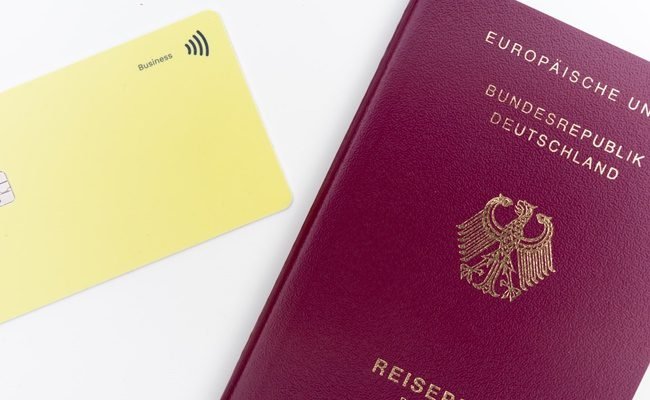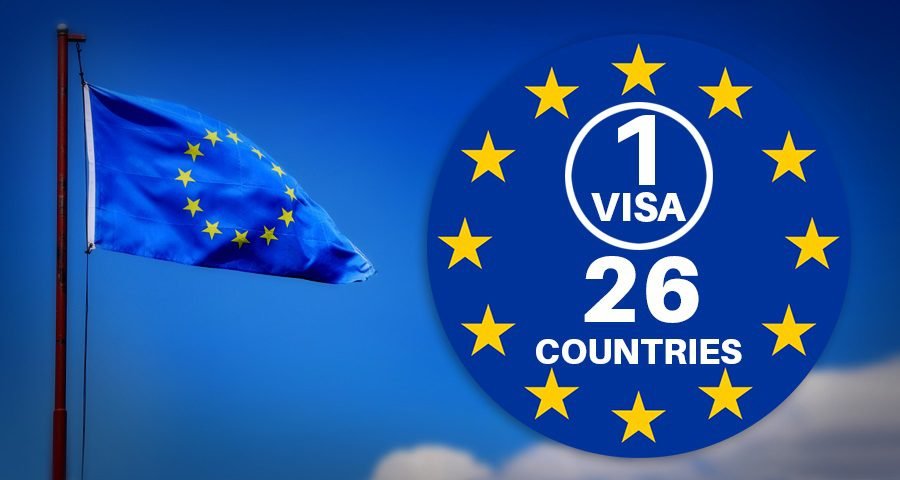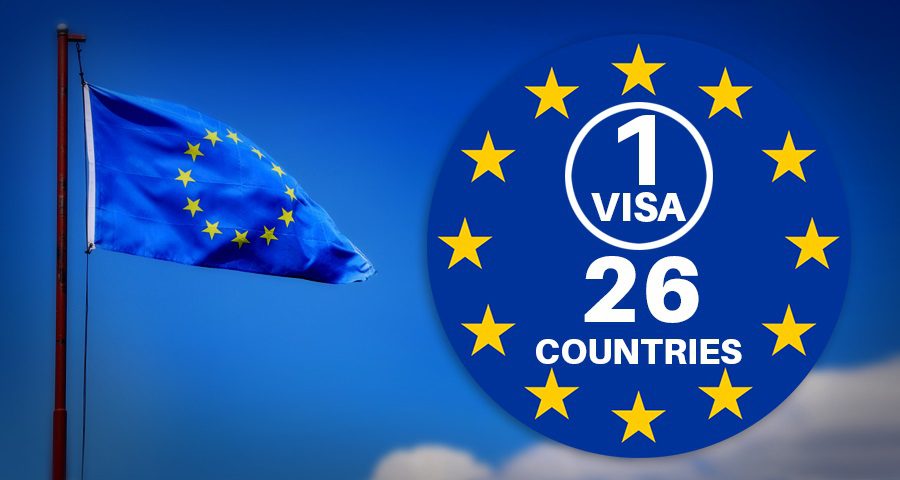Are you planning a European trip? Then you must have heard about the Schengen area. The Schengen area refers to a group of 26 European countries. These 26 countries have abolished passports and other types of border control at their mutual borders. It makes traveling between them easier. However, if you’re not a citizen of the European Union (EU) or European Free Trade Association (EFTA) member countries, you’ll need a Schengen Visa to enter the area.
A Schengen visa is an European visa that can be granted to any individual who is traveling to a country in Europe. A Schengen visa will allow holders to freely enter, travel within, and exit the Schengen zone from all 24 countries within it.
In this article, we’ll discuss everything you need to know about Schengen visas, including types, how to apply for them, required documents, fees, and other important information. This type of visa allows travelers to visit the countries in the Schengen Area, which encompasses over 500 million people.
What is a Schengen Visa?
A short-stay visa is a permit that allows someone to travel, except for work, within the Schengen country for up to 90 days out of 180.
If you are planning to stay in a Schengen country for more than 90 days, you need a visa for that European country.

Countries you can travel to with Schengen Visa
Below are the 26 countries that have abolished border controls in the Schengen Area.
Schengen Countries
- Austria
- Belgium
- Czech Republic
- Denmark
- Estonia
- Finland
- France
- Germany
- Greece
- Hungary
- Iceland
- Italy
- Latvia
- Liechtenstein
- Lithuania
- Luxembourg
- Malta
- Netherlands
- Norway
- Poland
- Portugal
- Slovakia
- Slovenia
- Spain
- Sweden and
- Switzerland
What Non-Schengen Countries You can Visit with a Schengen Visa
The Schengen visa allows visitors from non-European Union countries to be able to visit any European Union country with a single entry permit.
With a visa, you can visit countries outside of the Schengen agreement. However, you must have a multiple entry visa and be visiting for either tourist or business purposes.
Below is the complete list of countries that you visit with a Schengen Visa;
- Albania
- Antigua and Barbuda
- Belarus
- Bosnia and Herzegovina
- Bulgaria
- Colombia
- Croatia
- Northern Cyprus
- Georgia
- Gibraltar
- Kosovo
- Mexico
- Montenegro
- North Macedonia
- Romania
- Sao Tome and Principe
- Serbia
- Turkey

Types of Schengen Visas
There are three types of Schengen Visas available:
Uniform Schengen Visas
Uniform Schengen Visas (USV) are the most common type of Schengen Visa. They allow their holders to travel within the entire Schengen Area for up to 90 days within a 180-day period. Uniform Schengen Visas are further divided into three subcategories:
Type A: Airport Transit Visa
he Type A Schengen Visa is a visa that allows you to enter and stay in the airport for up to a maximum of five days. If you are traveling from one non-Schengen country to another and you’ll be connecting through a Schengen country, you need this visa. You cannot leave the airport with this visa and enter the relevant Schengen country. It allows its holder to transit through the international zone of a Schengen airport without entering the Schengen Area.
Type B: Transit Visa
With a Type B Schengen Visa, you can travel to any of the Schengen countries for up to five days. It allows its holder to transit through the territory of one or more Schengen countries for up to five days.
Type C: Short-Stay Visa
A short-stay visa that allows you to stay in a Schengen country for a fixed period of time is the Type C visa. It allows its holder to stay in the Schengen Area for up to 90 days within a 180-day period.
Limited Territorial Validity Visas (LTV)
Limited Territorial Validity Visas (LTV) are issued for a specific Schengen country or countries, allowing their holders to enter and remain only within the designated area. The duration of stay and the number of entries are determined on a case-by-case basis, based on the purpose of the trip and the supporting documentation provided.
National Visas
National Visas are issued by individual Schengen countries for stays longer than 90 days. They are intended for individuals who plan to study, work, or reside in a specific Schengen country for an extended period. National Visas have specific requirements and procedures that vary by country, and they do not allow their holders to travel freely within the Schengen Area.
This type of Schengen visa is subdivided into Single Entry, Double Entry, and Multiple Entry Visas.
Single Entry Visa:
With single entry, you can enter any of the Schengen countries for the time given on your visa. The visa expires as soon as you leave that country.
Double Entry Visa:
Similarly to the single entry visa, this type of Schengen visa permits you to enter and leave the same country two times within the predetermined time duration. Double-entry visas are usually processed in a faster way than free Visa Schengen.
Multiple Entry Visa:
With a Schengen visa, you can enter and leave the area any time you want. This is only valid for 90 days every six months.
LTV and National visas are two other types. LTV visas allow you to travel only within the Schengen area. National visas are best for those who want to study, work, or live in any country of the Schengen region.
How to Apply for Schengen Visas
You must first determine whether you need a Schengen Visa before applying for one in order to travel to Europe, depending on your nationality and travel objective.
If you are visiting more than one country, carefully plan in advance your travel itinerary, including the date range of your visit and the countries in which you will be traveling.
It takes at least four to five weeks to get a Schengen visa, but you have six months before your planned departure date to apply.
To ensure timely processing, apply for your visa early to go to countries like France and Germany. Processing for applications can take up a few weeks during busy times.
To apply, follow these steps: complete the application form, schedule an appointment at a consulate or embassy, and expect about a 15-day turnaround time.
Non-EU/Schengen countries will have to provide the same documents for traveling within the Schengen Union even if those are not required for visa-exempt travelers.
Applying for a Schengen Visa involves several steps, including:
- Determine the type of visa you need
Identify the type of Schengen Visa that best suits your travel needs and the purpose of your visit.
- Find out where to apply
Determine the Schengen country that is the main destination of your trip and where you should apply for the visa.
- Fill out the visa application form
Complete the Schengen Visa application form with accurate and up-to-date information.
- Gather the required documents
Collect all the necessary documents to support your visa application, including your passport, travel itinerary, proof of accommodation, financial means, and travel medical insurance.
- Pay the visa fee
Pay the Schengen Visa application fee, which varies depending on the type of visa and the Schengen country.
- Schedule a visa appointment
Schedule an appointment at the Schengen country’s embassy or consulate to submit your visa application and supporting documents.

Required Documents for Schengen Visa
To apply for a Schengen Visa, you will need to provide the following documents:
Passport and Visa Application Form
A valid passport that is not older than ten years and has at least two blank pages. The visa application form must be completed accurately and signed.
Travel Itinerary
A detailed itinerary of your trip, including travel dates, transportation, and accommodation arrangements.
Proof of Accommodation
Proof of accommodation for the entire duration of your stay in the Schengen Area, such as hotel reservations, a rental agreement, or an invitation letter from a host.
Proof of Financial Means
Proof that you have sufficient financial means to cover your stay in the Schengen Area, such as bank statements, salary slips, or sponsorship letters.
Travel Medical Insurance
Proof of travel medical insurance that covers emergency medical treatment and repatriation for a minimum of €30,000.
Additional Documents (if applicable)
Additional documents may be required depending on the purpose of your trip, such as a letter of invitation, a business contract, or a student enrollment letter.
Schengen Visa Fees
The Schengen Visa application fee varies by type of visa and the Schengen country. As of March 2023, the fee ranges from €35 to €80 for adults and €0 to €40 for children under the age of 12. Some categories, such as students and researchers, may be exempt from the visa fee.
To apply for a visa, you must pay a non-refundable fee. The type of the fee depends on your age and what type of visa you are seeking.
You can pay for Schengen visa costs with a credit card, debit card, or cash.
The fees for various types of visa applicants are listed below;
Shengen Visa Fee for Adult:
EUR 80 ($96 or ₹ 6,605 approx)
Shengen Visa Fee for Children between 6-12 years of age:
EUR 40 ($48 or ₹ 3,302 approx.)
Children under six, holders of diplomatic passports, official passports, service passports, pupils, students on a school trip, professors traveling to conduct scientific research, and family members of EU or EEA nationals can apply for Schengen Visa for free.
The cost for a Schengen visa application is as follows:
| Schengen Visa Category | Visa Cost in EUR | Visa Cost in USD* |
| Adult | €80 | $84 |
| Children between 6-12 years of age | €40 | $42 |
| Children younger than 6 years of age | Free | Free |
| Nationals from Armenia, Azerbaijan, Kosovo, and Russia | €35 | $37 |
| Nationals from the Gambia (as of December 8, 2022) | €120 | $126 |
* The applicable visa fee in USD (US Dollar) is as per the current exchange rate (as of January 2023). It is subject to change without notice.
Information Summary about Schengen Visa Documents Required and Fees:
We compiled documents required to apply for a Schengen visa for your reference.
- Passport valid for at least 3 months after the date you intend to leave the EU
- Signed visa application form.
- Two recent passport-size photographs.
- sufficient funds in the bank account.
- Proof of application fee payment.
- Proof of travel and medical insurance.
- Trip itinerary, including dates, round-trip flight bookings, hotel bookings or accommodation proof
- Other documents such as invitation letters, etc.
What to Expect During Your Visa Appointment?
During your visa appointment, you will need to submit your visa application and supporting documents. You may also be required to provide biometric data, such as fingerprints and a photograph. The consular officer may ask you questions about your trip and your intentions, so be prepared to answer truthfully and convincingly.
Schengen Visa Processing Time
The Schengen Visa processing time can vary depending on the Schengen country and the time of year when the number of applications is high. In general, the processing time can take up to 15 days, but it may take longer in some cases, such as if additional documents or information are required.
How to track your Schengen Visa application
You can check the status of your visa by contacting the relevant embassy or going to the website of the outsourced application center .
However, with the help of VFS Global, your Schengen Visa application can be processed in most of the countries including India, Bangladesh, Pakistan and tracked through their website. This will allow you to keep a digital record of your reference number.
FAQs
What is the Schengen Agreement?
- The Schengen Agreement is a treaty signed in 1985 that abolished internal borders among European countries and established a common external border.
How many countries are in the Schengen Area?
- There are 26 Schengen countries, including 22 European Union member states and 4 non-EU countries.
Can I apply for a Schengen Visa at any Schengen country’s embassy or consulate?
- No, you need to apply for a Schengen Visa at the embassy or consulate of the main destination of your trip.
Do I need to provide biometric data to apply for a Schengen Visa?
- Yes, in most cases, you need to provide fingerprints and a photograph.
Can I extend my Schengen Visa?
- In general, Schengen Visas cannot be extended. If you need to stay longer than the visa allows, you need to apply for a new visa.
Conclusion
In summary, a Schengen Visa is a document that allows its holder to enter and travel freely within the Schengen Area for a limited period. There are several types of Schengen Visas, each with its own requirements and limitations. To apply for a Schengen Visa, you need to determine the type of visa you need, find out where to apply, fill out the visa application form, gather the required documents, pay the visa fee, and schedule a visa appointment. The required documents include a passport, travel itinerary, proof of accommodation, proof of financial means, and travel medical insurance. During your visa appointment, you will need to submit your visa application and supporting documents and may be required to provide biometric data. The Schengen Visa processing time can vary, but it usually takes up to 15 days.
Michael C Vang is a passionate blogger. He has been blogging since 2013 on a variety of topics. He is committed to creating informative and engaging content that helps readers learn more about everything.



